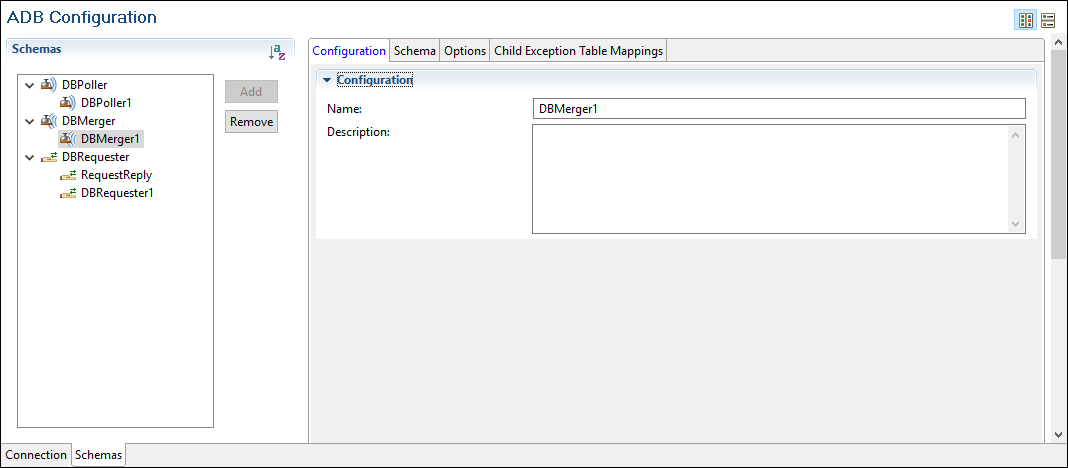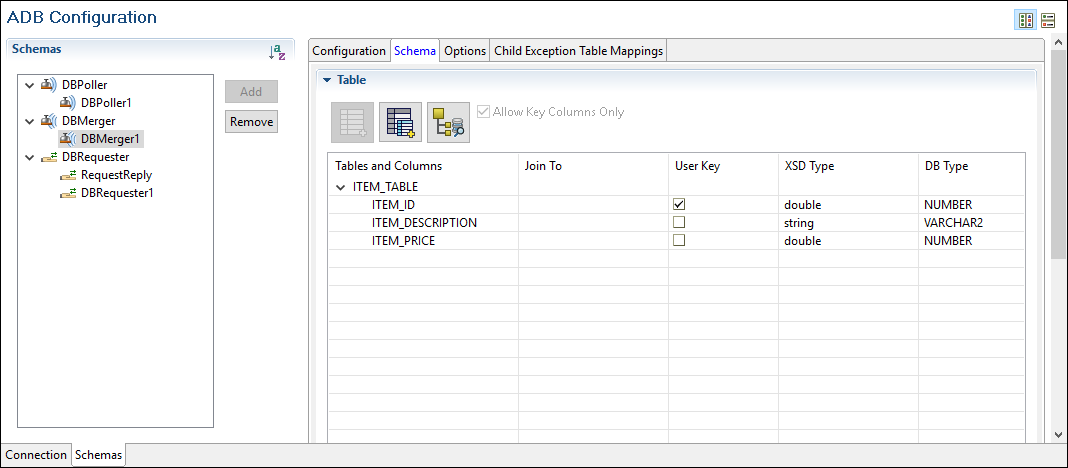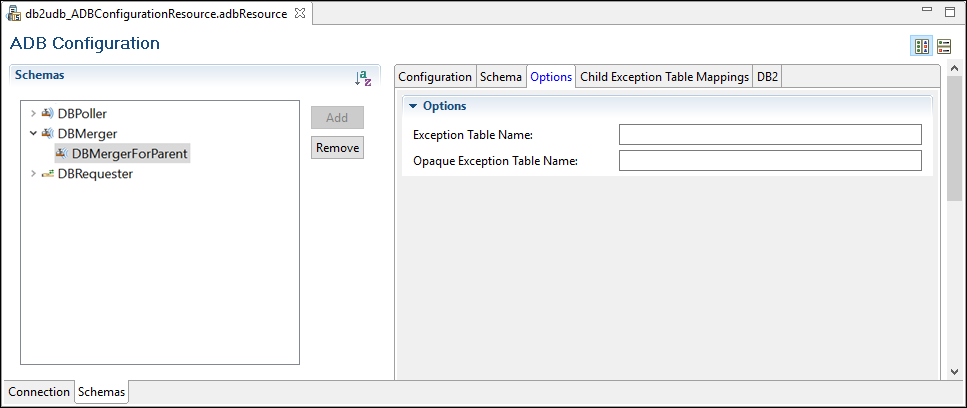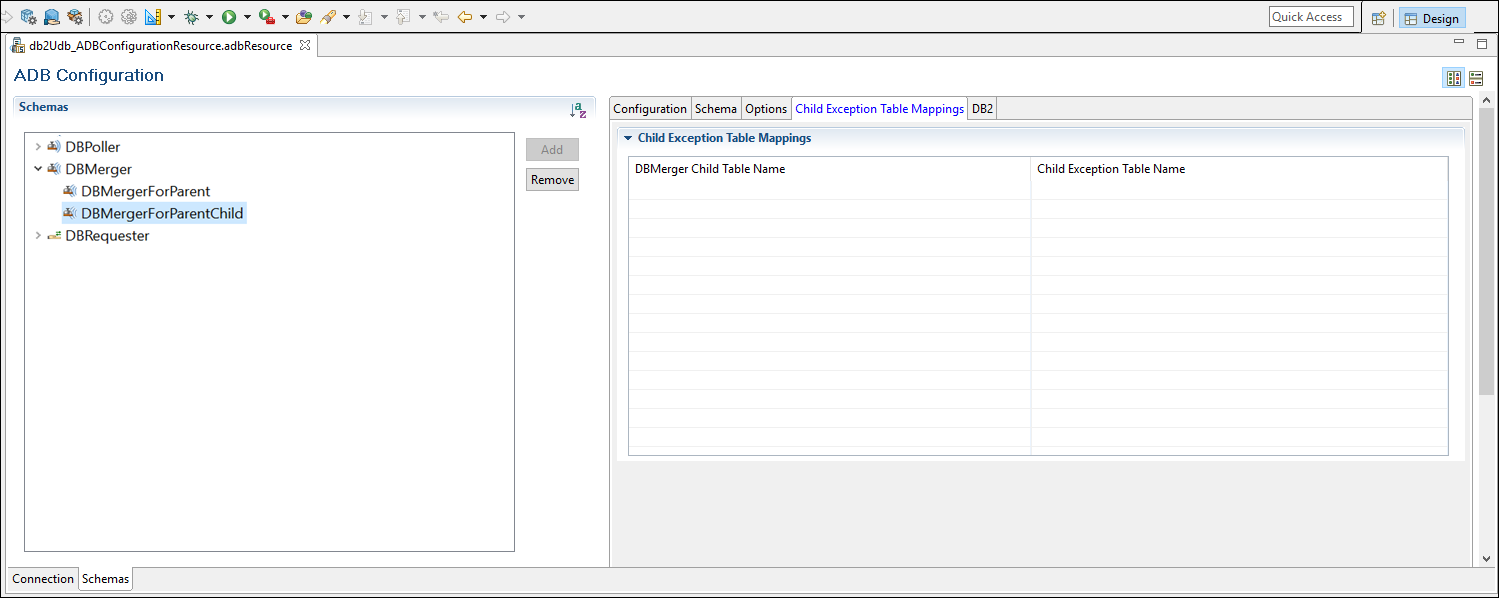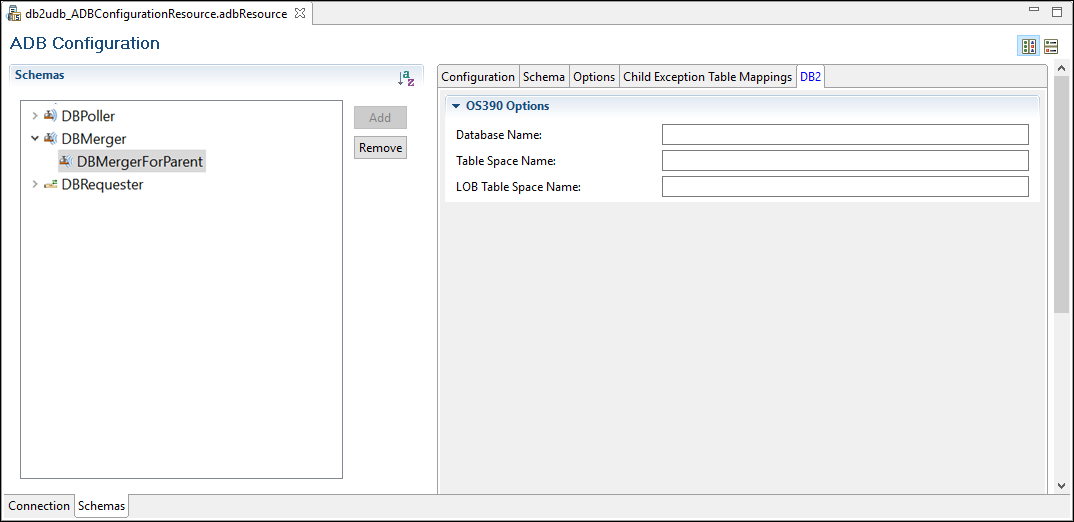DBMerger Schema
When you create a new DBMerger schema, a corresponding section is created on the Schemas page.
The Configuration tab contains the following fields:
The Schema tab contains the following UI options:
The Options tab contains the following fields for the Data Merger activity:
| Field | Module Property? | Description |
|---|---|---|
| Exception Table Name | No | Name of the exception table to which data is written if the plugin cannot write the data to the data merger destination table. This table holds messages that caused an exception. If the table does not exist, data merger creates one by itself. For more information about exception table, see
Exception Table.
The exception table cannot contain any user-created columns where the column name starts with ADB_. These characters are reserved for use by the plugin. |
| Opaque Exception Table Name | No | Specifies the name for the opaque exception table. For more information about opaque exception table, see Opaque Exception Table. |
You can use the Child Exception Table Mappings tab to create a child exception table.
The Child Exception Table Mappings tab contains the following fields:
| Icon/Option | Description |
|---|---|
| DBMerger Child Table Name | Displays the list of child table names. |
| Child Exception Table Name | Displays the list of child exception table names corresponding to each child table in the DBMerger Child Table Name column. |
When you use the DB2 connection, the DB2 tab is available on the Schemas page. The DB2 tab contains the following fields for the Data Merger activity:
| Icon/Option | Description |
|---|---|
| OS390 Options | |
| Database Name | Name of the database that you want to put your publishing table in. |
| Table Space Name | Name of the table space where the publishing table is located. |
| LOB Table Space Name | The name of the Large Objects (LOB) table space name where auxiliary table of the opaque exception table is located. |

